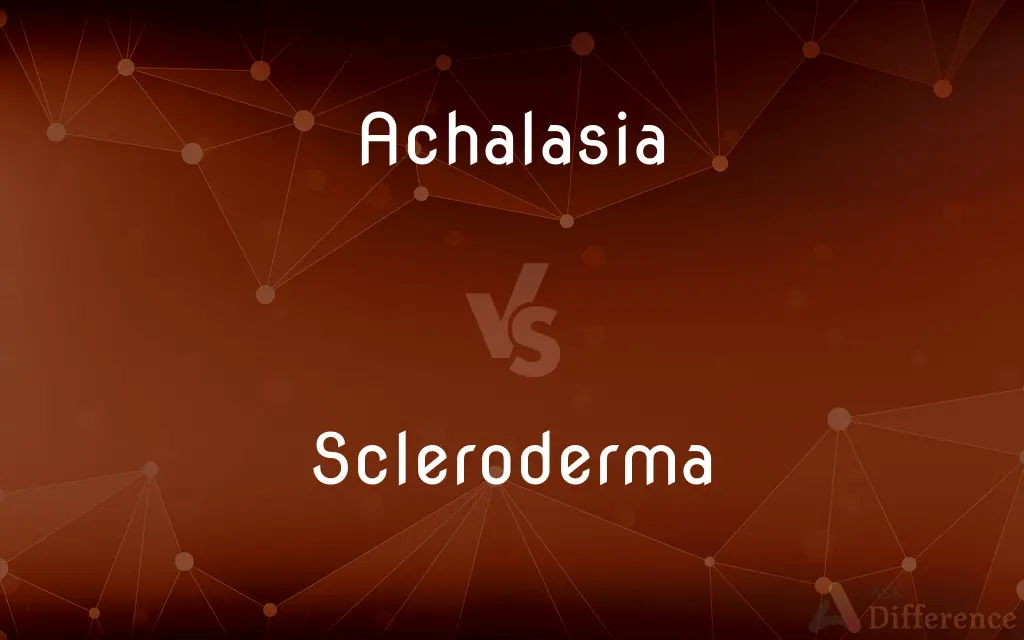Achalasia vs. Scleroderma — What's the Difference?

Difference Between Achalasia and Scleroderma
ADVERTISEMENT
Compare with Definitions
Achalasia
The failure of a ring of muscle fibers, such as a sphincter of the esophagus, to relax.
Scleroderma
Scleroderma is a group of autoimmune diseases that may result in changes to the skin, blood vessels, muscles, and internal organs. The disease can be either localized to the skin or involve other organs, as well.
Achalasia
(medicine) A neuromuscular condition where a ring of muscles is unable to relax fully, causing obstruction of a lumen, as:
Scleroderma
A pathological thickening and hardening of the skin.
Achalasia
(usually and especially) Such obstruction in the esophagus: esophageal achalasia.
ADVERTISEMENT
Scleroderma
(medicine) A chronic systemic autoimmune disease characterized by hardening the skin or other organs through excessive deposits of collagen.
Achalasia
(occasionally) Such obstruction due to impairment of other gastrointestinal tract smooth muscles.
Scleroderma
A disease of adults, characterized by a diffuse rigidity and hardness of the skin.
Scleroderma
An autoimmune disease that affects the blood vessels and connective tissue; fibrous connective tissue is deposited in the skin
Scleroderma
Genus of poisonous fungi having hard-skinned fruiting bodies: false truffles
Share Your Discovery

Previous Comparison
Diatribe vs. Pejorative
Next Comparison
Peritoneum vs. Retroperitoneum













































